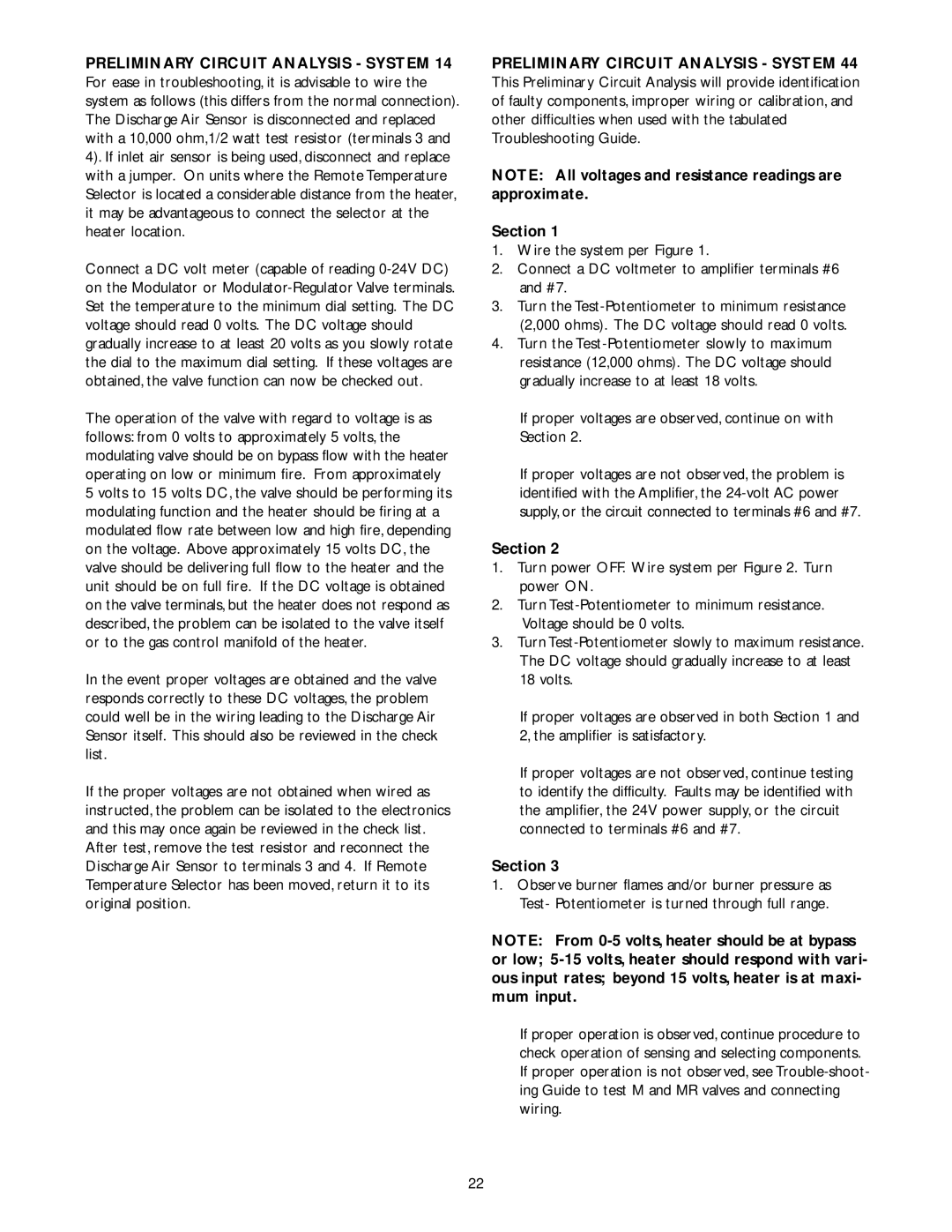PRELIMINARY CIRCUIT ANALYSIS - SYSTEM 14
For ease in troubleshooting, it is advisable to wire the system as follows (this differs from the normal connection). The Discharge Air Sensor is disconnected and replaced with a 10,000 ohm,1/2 watt test resistor (terminals 3 and 4). If inlet air sensor is being used, disconnect and replace with a jumper. On units where the Remote Temperature Selector is located a considerable distance from the heater, it may be advantageous to connect the selector at the heater location.
Connect a DC volt meter (capable of reading
The operation of the valve with regard to voltage is as follows: from 0 volts to approximately 5 volts, the modulating valve should be on bypass flow with the heater operating on low or minimum fire. From approximately
5 volts to 15 volts DC, the valve should be performing its modulating function and the heater should be firing at a modulated flow rate between low and high fire, depending on the voltage. Above approximately 15 volts DC, the valve should be delivering full flow to the heater and the unit should be on full fire. If the DC voltage is obtained on the valve terminals, but the heater does not respond as described, the problem can be isolated to the valve itself or to the gas control manifold of the heater.
In the event proper voltages are obtained and the valve responds correctly to these DC voltages, the problem could well be in the wiring leading to the Discharge Air Sensor itself. This should also be reviewed in the check list.
If the proper voltages are not obtained when wired as instructed, the problem can be isolated to the electronics and this may once again be reviewed in the check list. After test, remove the test resistor and reconnect the Discharge Air Sensor to terminals 3 and 4. If Remote Temperature Selector has been moved, return it to its original position.
PRELIMINARY CIRCUIT ANALYSIS - SYSTEM 44
This Preliminary Circuit Analysis will provide identification of faulty components, improper wiring or calibration, and other difficulties when used with the tabulated Troubleshooting Guide.
NOTE: All voltages and resistance readings are approximate.
Section 1
1.Wire the system per Figure 1.
2.Connect a DC voltmeter to amplifier terminals #6 and #7.
3.Turn the
4.Turn the
If proper voltages are observed, continue on with Section 2.
If proper voltages are not observed, the problem is identified with the Amplifier, the
Section 2
1.Turn power OFF. Wire system per Figure 2. Turn power ON.
2.Turn
3.Turn
If proper voltages are observed in both Section 1 and 2, the amplifier is satisfactory.
If proper voltages are not observed, continue testing to identify the difficulty. Faults may be identified with the amplifier, the 24V power supply, or the circuit connected to terminals #6 and #7.
Section 3
1.Observe burner flames and/or burner pressure as Test- Potentiometer is turned through full range.
NOTE: From
If proper operation is observed, continue procedure to check operation of sensing and selecting components. If proper operation is not observed, see
22
